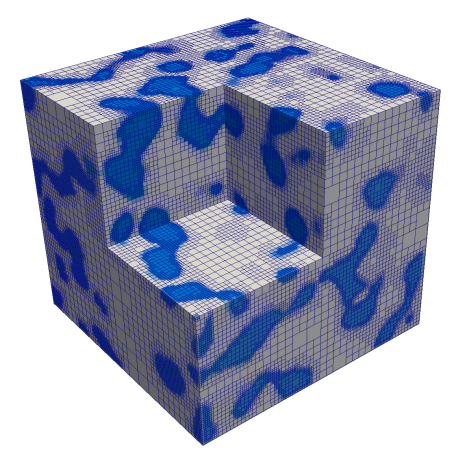Failure and microstructure evolution of foams and cell structures
Stefan Liebenstein, Michael Zaiser, Stefan Sandfeld

Snow has a very high porosity – We used data from CT scans as input for our finite element simulations and obtain effective material properties under consideration of the contact forces during deformation.
Lightweight materials as e.g. metal foams or materials with cell structures exhibit many useful and interesting properties: metal foams are widely used as shock absorbers and as structural elements when weight matters. This project investigates how microstructural disorder may influence
- the macroscopic material behaviour, e.g. the macroscopic stress-strain response
- and the microscopic aspects (e.g. crack propagation) material behaviour.
One of the challenging questions in the latter case is the question: if and how can statistical variations on the microstructure level influence or stop crack propagation and failure of the whole structure?
A closely related research area is the investigation of the behaviour of snow and ice microstructure during elastic and plastic deformation, where large-scale finite element simulations helps us to homogenize and obtain effective material properties.

